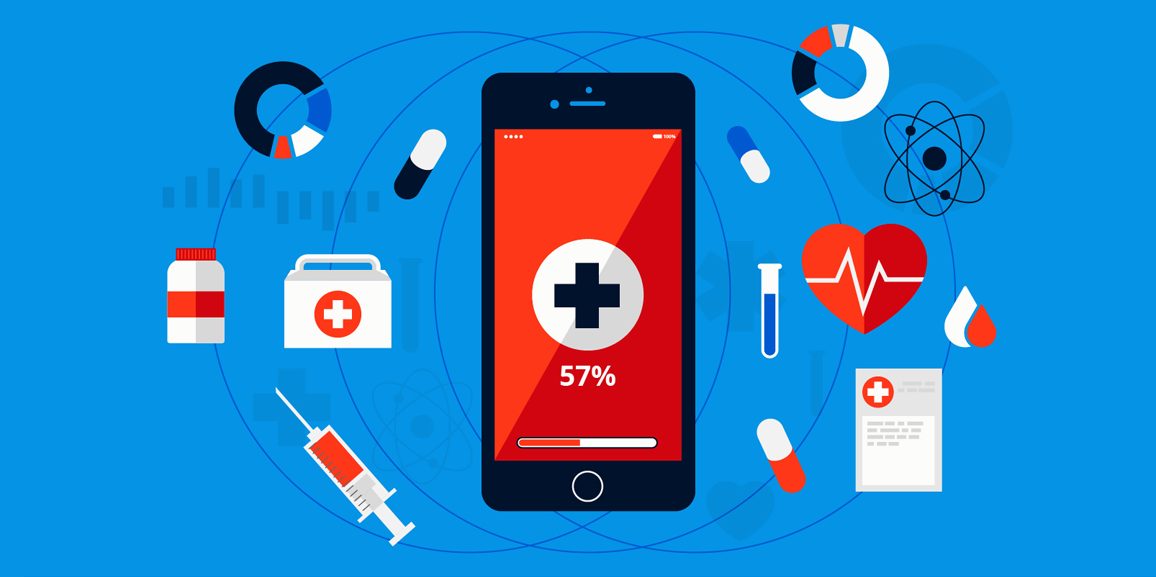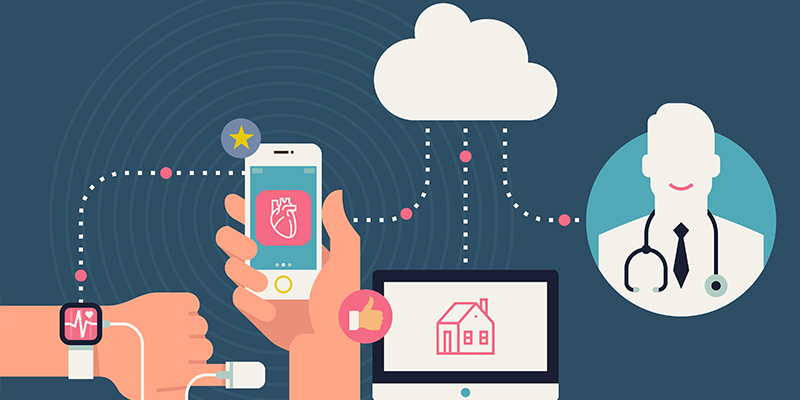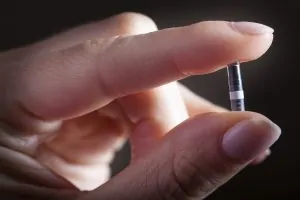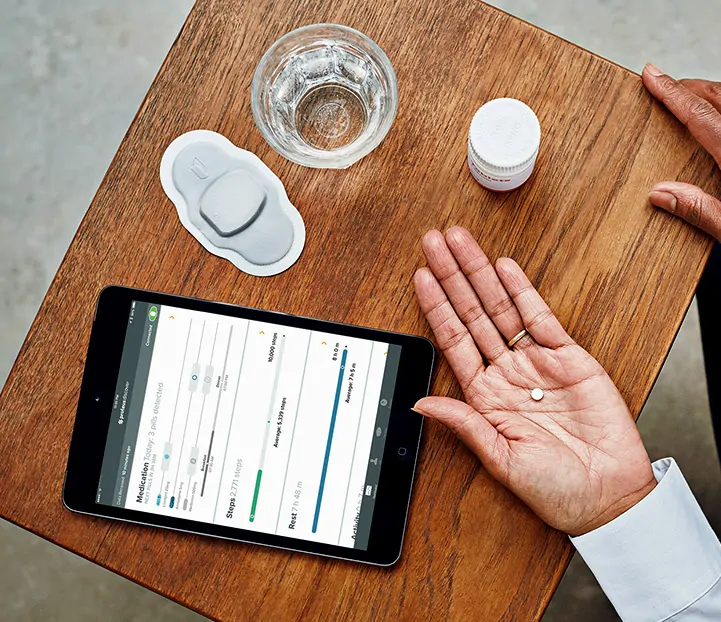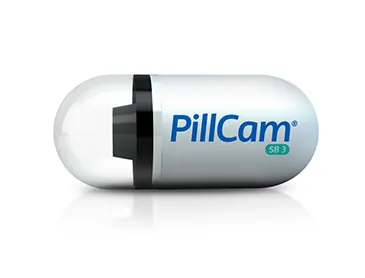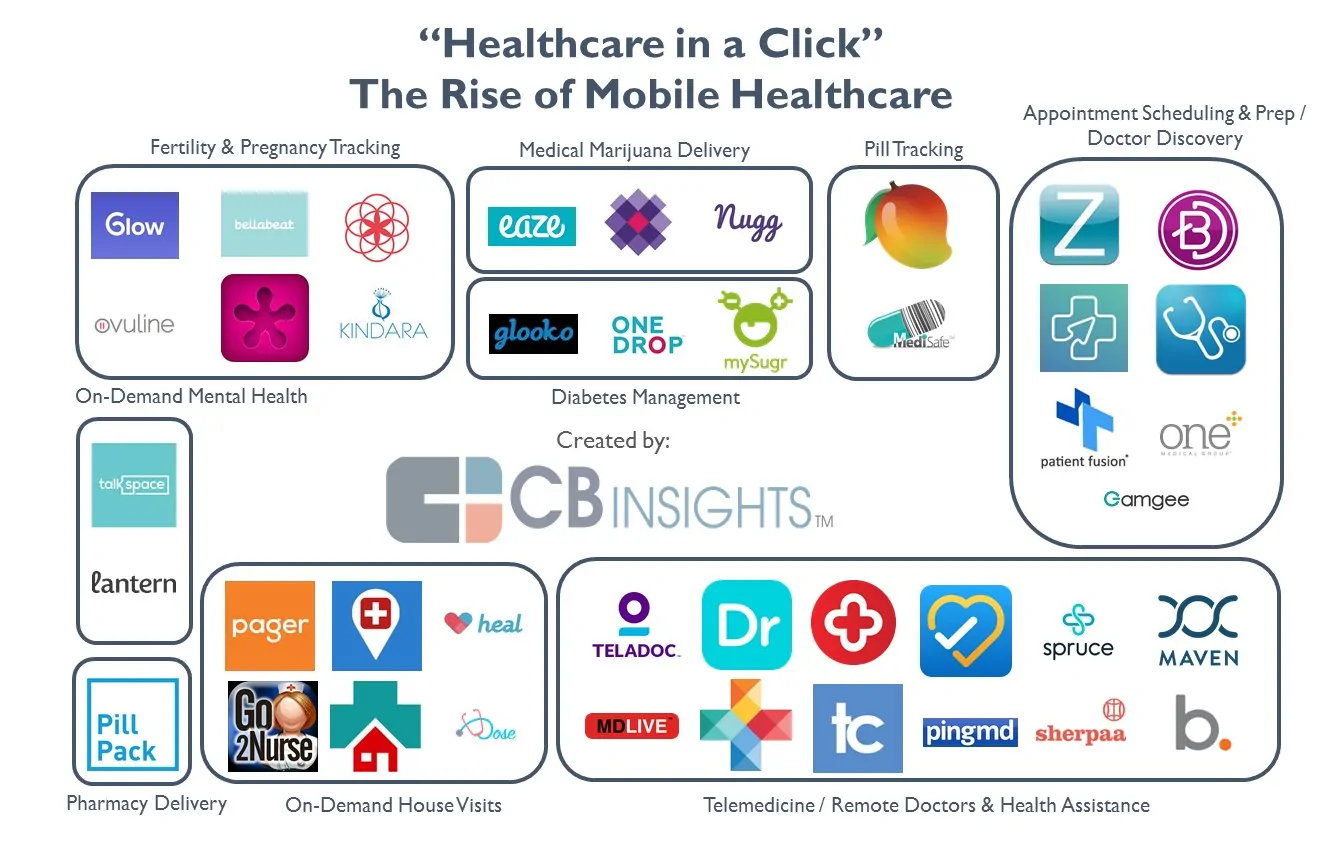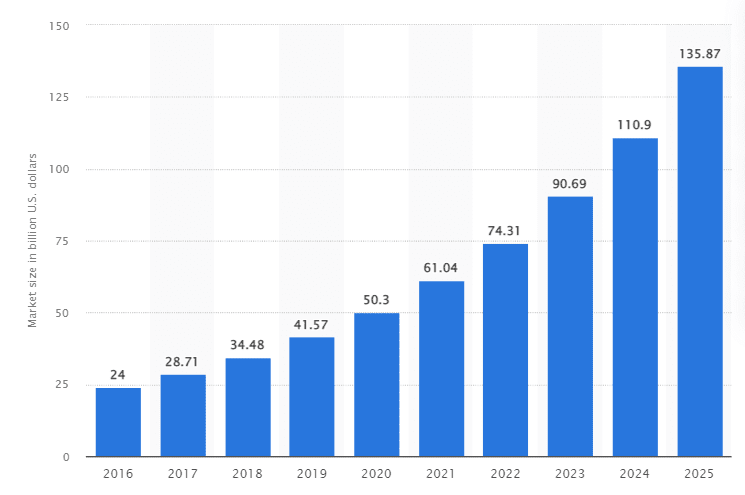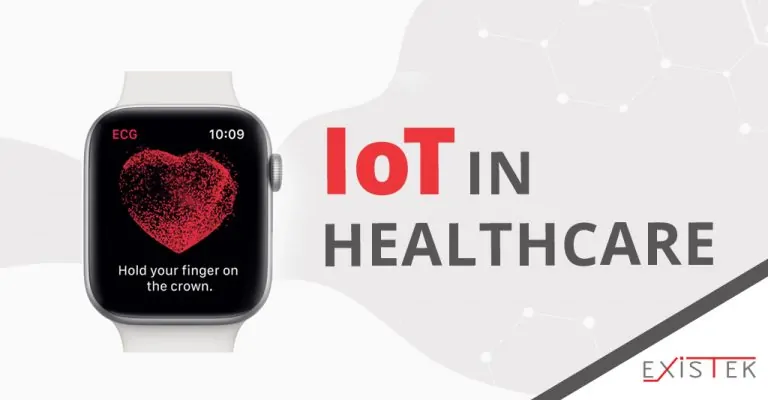
Updated: June 27, 2024
Published: June 7, 2019
It is hard to overestimate the place and benefits of IoT in healthcare these days. Smart devices, wearables and the overall level of connectivity and innovations in modern medical equipment have changed the industry forever. And definitely for the best. In this piece, you’ll find a comprehensive answer to the majority of questions you can have about the state of IoT in healthcare. Enjoy!
List of the Contents:
- The place and benefits of IoT in healthcare
- IoT devices for healthcare
- IoT healthcare use cases
- Challenges of IoT in medical practice
- Advantages and disadvantages of IoT
- IoT in healthcare examples and trends
- Future benefits of IoT in healthcare
- In conclusion
THE PLACE AND BENEFITS OF IOT IN HEALTHCARE
To say that modern medicine is striving would be a moderate expression. The progress accelerates daily ‘without any remorse’, transforming all known medical practices. Global healthcare evolves based on the latest achievements of the planet’s greatest minds and amazing prospects of autonomous, self-learning tech solutions.
Along with such rapid development, however, comes a strict necessity to keep up with the pace. The good thing is that all medical fields are either looking to or already go hand in hand with advanced technologies – from diagnostics to therapeutics, from pediatrics to complex surgery.
Technologies are numerous – artificial intelligence, machine learning – you name it. But what particular tech concept or combination of concepts can provide sufficient monitoring and managing powers such an evergrowing global niche requires? The answer may be found in the Internet of Things or IoT. Despite the concept’s relatively young age, it’s already become closely entangled with healthcare. So much so that it’s commonly coined the Internet of Medical Things.
It’s easily explained by the numerous benefits of IoT in healthcare and how it helps to improve medical services. The adoption of IoT devices for healthcare allows the industry to provide better patient care and experience, improve management, reduce errors, improve treatment outcomes, etc.
The extensive centralization and interconnection capacities the IoT tech provides are difficult to overestimate. It brings health monitoring, remote treatment, and hospital physical and digital infrastructure organization to a whole new level.
IoT is a rapidly growing technology that connects everyday objects to the internet, allowing them to communicate and share data.
This technology has the potential to revolutionize many industries, including healthcare. By connecting medical devices, wearables, and other healthcare-related technology to the internet, IoT enables new forms of remote monitoring, telemedicine, and medical device connectivity. It’s important to explore the place of IoT in healthcare and the benefits it can provide to patients, healthcare providers, and the healthcare system as a whole.
In healthcare, IoT can potentially improve patient outcomes, reduce costs, and increase efficiency. Remote patient monitoring, for example, allows healthcare providers to track vital signs and other health data in real time, which can help identify potential problems early on and intervene before they become serious. Telemedicine, which uses technology to connect patients with healthcare providers remotely, can increase access to healthcare for those in remote or underserved areas. Additionally, medical device connectivity can improve communication and collaboration between healthcare providers, helping to ensure that patients receive the best possible care.
IoT can also help reduce healthcare costs by increasing efficiency and automation. For example, by using IoT to track inventory and automate ordering processes, hospitals can reduce the amount of waste and improve their bottom line. Additionally, by using IoT to monitor patients remotely, healthcare providers can reduce the need for expensive hospital visits.
Furthermore, IoT can also play a crucial role in the future of healthcare by enabling new forms of precision medicine, drug delivery, and virtual reality-based therapy. With the help of IoT, medical professionals can gain a deeper understanding of patients’ health, disease, and treatment outcomes, which in turn can lead to more individualized, efficient, and effective treatments.
So let’s ponder IoT powers in healthcare in a bit more detail.
IOT DEVICES FOR HEALTHCARE
The Internet of Things allows the setting up of a centralized network of interconnected devices to generate and exchange data within a single framework. All that data can also be tracked and gathered in real-time, which provides a passive accumulation of analytics materials. In terms of enhancement for medical facilities, this means that a regular hospital can be turned into a smart hospital.
It is an advanced facility where everything is tracked and managed simultaneously while all the data is collected in a centralized database. Such tech features open a myriad of benefits of IoT in healthcare to improve modern hospitals’ convenience, efficiency, and even budget-saving options.
One of the main types of IoT devices in healthcare is wearable devices. These include smartwatches, fitness trackers, and smart clothing. These devices can track a patient’s vital signs and activity levels and send that data to healthcare providers for analysis. Smartwatches, for example, can measure heart rate, sleep patterns, and steps taken, while smart clothing can track posture and breathing.
Another category of IoT devices in healthcare is medical devices. These include remote patient monitoring devices, such as smart pills and smart inhalers, which can track a patient’s medication adherence and send that information to healthcare providers. Smart pills, for example, have a sensor that sends a signal to a wearable device or smartphone when the pill has been ingested, and smart inhalers can track how often and when a patient uses their inhaler.
Home healthcare devices, such as smart medication dispensers, telehealth devices, and smart home assistants, are also becoming increasingly popular in the healthcare industry. Smart medication dispensers can remind patients when to take their medication and even dispense the correct dosage. Telehealth devices, such as video conferencing software, allow patients to have virtual consultations with their healthcare providers. Smart home assistants, such as Amazon’s Alexa or Google Home, can provide patients with information about their health and medication and answer general health-related questions.
There are many advantages to using IoT devices in healthcare. They can improve patient outcomes by providing healthcare providers with more accurate and up-to-date information about a patient’s health. They can also increase efficiency in healthcare delivery, as well as reduce costs. Additionally, IoT devices can increase patient engagement and empowerment, as patients are able to take a more active role in their own healthcare.
The advantages of IoT devices for healthcare continue beyond there. Technology has a very diverse field of application in medicine. Let’s take a look at some major implementations.
IOT USE CASES IN HEALTHCARE
Remote patient monitoring
In 2018, NHS England – an ‘executive non-departmental public body of the Department of Health and Social Care’ announced that it’s willing to support a remote diabetes treatment solution. The statement was made on World Diabetes Day 2018. The solution is a Continuous Glucose Monitor (CGM). A device the size of a penny monitors blood glucose levels non-stop after it’s inserted in a patient’s arm.
The monitoring data can be easily accessed via your Android or iOS device. Mass-market instances of such products are Freestyle Libre and Eversense. Such smart health monitoring devices bring huge value to the research and treatment of diabetics.
Eversense continuous glucose monitoring sensor that can be implanted in the patient’s arm and lasts up to 90 days.
And in many other cases, remote capabilities (also called telehealth) may make the need to visit your local hospital practically obsolete. An excellent resolution for patients suffering from mobility issues.
What is telehealth software development?
Find about common functionality, required compliance regulations, and development approaches for telehealth software implementation.
Also, going deeper into the remote subject, the IoT network can connect and track practically any sensor inserted into a human body for medical purposes. This will help prevent cardiac arrests (MoMe Cardia from InfoBionic) and all sorts of seizures to provide medical help for critical patients just in time.
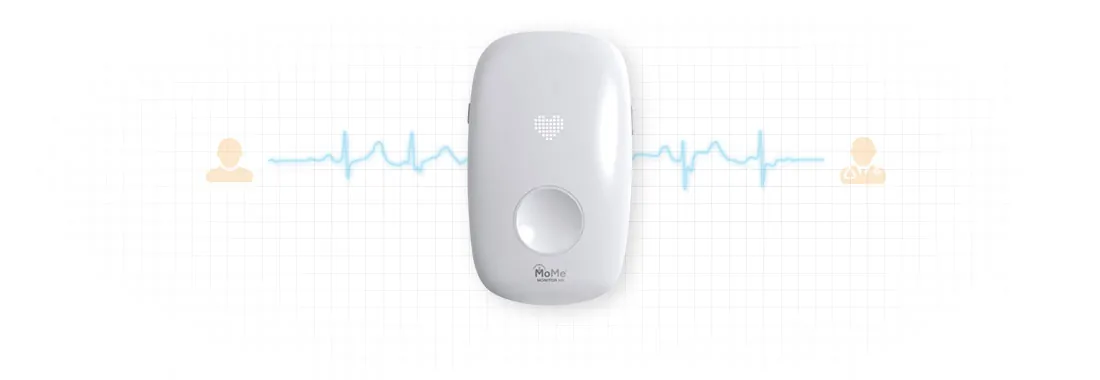
Tracked ingestible sensors
The World Health Organization conducted a study in 2003 to find out that about 50% of prescribed medicines aren’t taken correctly or completely ignored. A prominent example of resolving this issue is the ingestible sensors solution developed by Proteus. These tiny sensors take the place of a prescription and send a signal to a receiving device upon dissolution in the stomach. An amazing advanced creation, Proteus’ ‘smart pills’ will surely help reduce the rates of incorrect, senseless consumption of highly important medical prescriptions. Now, this is what one can call truly advanced drug management.
While being an advanced piece of medical technology, Porteus Smart Pills have the same tiny size as the actual pills.
There are also smart pills that feature tiny cameras, which conveniently visualize the inside environment of one’s organism. PillCam from Medtronic is one example.
Mobile health
Also called mHealth, it’s the way of watching and taking care of one’s health via mobile can be a true life-saver for modern patients, practically all of whom use smartphones regularly. Mobile health is an emerging field that contributes heavily to critical medical situations and regular treatment instances. As we’ve already mentioned in the ‘Remote patient monitoring’ section, mobile apps can serve as the management means for health tracking devices.
This is only a small portion of startups who are trying to gain market share with their mobile app. Source: www.cbinsights.com
Such apps can be used as your full-blown healthcare hub, where you can access valuable medical info, analyze your organism behaviour trends, manage other body-inserted IoT sensors, and contact your doctor with a single tap.
This is an especially valuable solution for underdeveloped countries of the world where people can’t afford regular visits to hospitals yet, most probably, have smartphones. And governments, in turn, get the capability to see how the population is doing in terms of health, accumulating massive statistics.
There are many apps already available on the market, ranging in functionality and purpose:
- Medication management apps;
- Fitness apps
- Body, activity, & sleep-tracking apps
- Pregnancy monitoring apps
- Individual health recording apps
The list may go on. You can check it all out yourself on your OS-compatible mobile application market.
Looking for more details on mHealth app development?
Check the article to discuss different types of mHealth solutions, successful examples and a comprehensive guide to the implementation process.
Smart hospitals
Dissatisfaction with flawed, difficult-to-manage hospital infrastructures is a common issue in most of the planet’s countries (even the developed ones). Colossal loads of paperwork, long and frustrating lines, and working overload most nurses and doctors experience – this is where the problem stems.
Practically all such situations can be turned around with the integration of IoT solutions. Huge, cumbersome paper registers can be replaced with an automated, centralized database, which can be additionally enhanced in terms of reliability with blockchain and smart contracts; a single management system can receive submissions, help optimally control queues, and track staff members via their smartphones; all the equipment can also be remotely monitored and managed (e.g., shut down in unprecedented cases).
Such innovations can help greatly reduce in-house costs for hospitals, preserve forests, and make both patients and medical staff’s lives easier. The overall productivity will also increase due to the automated smart solutions’ capability to immediately recognize health issues that would otherwise take months of live doctor diagnostics. The benefits of IoT in healthcare are highly valued by medical practitioners and patients.
Enhanced chronic disease treatment
With IoT-powered wearables, sensors, data analytics, and mobile opportunities, battling chronic diseases becomes more efficient and accessible. The thing is, recurring health issues must be monitored and analyzed over long periods. That way, trends in the disease fluctuations can be defined and juxtaposed to be most efficiently treated.
All that tech allows doing just that, with many additional capabilities provided by the integration of blockchain and AI on top of that. It allows developers to bring more benefits of IoT in healthcare. This is very important when it comes to health issues as difficult to understand and underexplored as the chronic ones.
CHALLENGES OF IOT IN HEALTHCARE
As much as the Internet of Medical Things seems to be revolutionary and highly efficient, there are still some major challenges of IoT in healthcare this tech concept must overcome down the road. With large, game-changing integrations such as this one, there comes along a myriad of technical difficulties and adaptation issues. The main include:
- Underdeveloped initiatives. Many IoMT initiatives directed at battling chronic diseases or other issues still need time to grow and develop. This technological niche as a whole must grow a lot to start providing regular enhancement results.
- Possible lack of available memory. IoT sensors and devices can generate colossal amounts of data, which is important and needs to be analyzed. This poses a question of huge data repositories that must hold all those data volumes for indefinite terms. Cloud solutions turn into one of the decisions here.
- Difficulties with regular updates. With so many hardware solutions comes as much software for powering and managing it all. This software must be timely updated in order to run smoothly and stay at its latest version. And here’s where constant updates require lots of effort and might spawn many technical issues.
- Personal sensitive data security. An IoT-powered medicine has to follow all the latest security compliance regulations and adopt the best approaches to secure medical data. Encrypting data allows business associates and healthcare providers to make it difficult for attackers to decipher patient data even if they gain access to it.
- Global healthcare regulations. The IoMT still has to be approved by global healthcare regulatory bodies worldwide. This will take time and may keep many innovations at bay just because of some formalities.
ADVANTAGES AND DISADVANTAGES OF IOT IN HEALTHCARE
Considering the above-mentioned challenges, there are, indeed, downsides and benefits when it comes to medical IoT.
Advantages of IoT in healthcare
The ‘all-consuming’ connection of health devices and data centralization brings many significant benefits of IoT in healthcare to the table, such as:
- All-around technological enhancement. Rendering hospital visits unnecessary, passively accumulating and deeply analyzing important health data, etc. We’ve already pondered on all these advanced tech capacities galore enough. The IoT healthcare use cases provide space for fantastic long-term innovations.
- Cost savings. One of the greatest benefits of IoT in healthcare is that efficient autonomous systems will cost less to manage and ‘employ’ in the long run. Things are even better when it comes to patient cost savings due to fewer hospital journeys as well as accelerated diagnostics and treatment.
- Accessibility. Doctors can view all the necessary data on command and check real-time patient conditions without leaving their office.
Disadvantages of IoT in healthcare
Alternatively, some downsides that come along with the massive implementation of the IoT in healthcare include:
- Privacy can be potentially undermined. As we’ve already mentioned, systems get hacked. Much attention will need to be focused on data security, which requires significant additional spending.
- Unauthorized access to centralization. There is a chance that dishonest interlopers may access centralized systems and realize some cruel intentions.
- Global healthcare regulations. International health administrations are already issuing guidelines that must be strictly followed by governmental medical establishments integrating the IoT use cases into their workflow. These may restrict possible capacities to some extent.
IOT TRENDS IN HEALTHCARE
At present, there can be defined several medical IoT trends implemented by majorities of startups worldwide.
- Wearables continue to top the market. Major mobile technology providers like Apple and Android are enhancing and updating their authentic wearables, adding more health-tracking features. And the rest of the world isn’t shy to follow the tendency, spawning numerous various-purpose mini devices to gain full benefits of IoT in healthcare.
- Remote patient monitoring. IoT-enabled devices such as wearable sensors, smartwatches, and home-monitoring devices can collect and transmit patient data, such as vital signs, blood pressure, glucose levels, and activity levels. This allows healthcare providers to monitor patients remotely and intervene when necessary, reducing the need for in-person visits and hospital stays.
- Telemedicine. IoT technologies such as video conferencing, remote monitoring, and secure messaging platforms enable patients to connect with healthcare providers remotely, reducing the need for in-person visits. This can improve access to healthcare for patients in remote or underserved areas, as well as reduce the spread of infectious diseases.
- Electronic prescribing. IoT-enabled systems allow doctors to send prescriptions directly to a pharmacy, reducing errors and improving the speed and efficiency of the prescribing process. This can also improve patient adherence to medications and reduce healthcare costs.
- Smart medical equipment. IoT-enabled medical devices, such as infusion pumps, imaging machines, and surgical instruments, can send data to healthcare providers for remote monitoring and analysis. This can improve the accuracy and efficiency of medical treatments and reduce the risk of human error.
- Surgical robotics has become a common reality. AI-powered, robotic surgical means have been shown to be more precise than real doctors on more than one occasion. There are still limitations and risks involved, but the technology is definitely in the spotlight and is looking to become more widespread in the nearest future.
- Integration of other prominent technologies with the IoT expands the horizon. AI, AR, Machine Learning, Big Data, blockchain, and smart contracts – are all that fuel up and expand the IoT powers even further. AI is already better and far more precise in predicting, for one instance, women’s breast cancer.
Overall, the IoT trends in healthcare are aimed at improving the quality of care, increasing the efficiency of the healthcare system, and reducing costs. As technology continues to advance, we can expect to see even more innovative and sophisticated IoT solutions in healthcare in the future.
FUTURE BENEFITS OF IOT IN HEALTHCARE
Full-blown smart hospitals, mHealth as a regular, common thing on a global scale, and reduced physical visits to hospitals are only an approximate picture of the IoMT success. That said, most progressive hospitals are either implementing major IoT techniques and capabilities or have already enhanced parts in their calibration stage.
The projected size of the IoT in the healthcare market worldwide from 2016 to 2025 (in billion of U.S. dollars). Source: Statista
The IoT market keeps on continuous growth and doesn’t seem to lose this tendency. Medical providers discover more and more benefits of IoT in healthcare and continue leveraging a wide variety of solutions. Examples of IoT in healthcare often aim at covering such needs as:
- monitoring and maintenance
- remote control and operation
- location-based services
- medication management
- chronic disease management
- clinical operations
- telemedicine
- medical research
- emergency response
- hospital management
- connection with IoT devices for healthcare
According to independent predictions, almost 90% of healthcare establishments and organizations worldwide will employ the IoT as a regular in-house tool. So, the ‘now’ of the healthcare IoT is pretty vivid, with its future looking even brighter. Numerous benefits of IoT in healthcare have opened unique opportunities for continuous advancement in medical industry.
The future of IoT in healthcare is promising, with advancements in technology expected to enhance the capabilities of IoT in healthcare further. With the advent of 5G networks, IoT devices will have faster and more reliable connectivity, which will enable more advanced remote monitoring and telemedicine applications. Edge computing, which allows data to be processed closer to the source, will also play a crucial role in the future of IoT in healthcare, as it will enable real-time analysis of patient data, even in low-bandwidth environments.
SUMMARY
Let us emphasize once more that the IoT can be nothing short of a revolution in the field as important on a global scale as healthcare. There are still many difficulties, peculiarities, and technological obstacles to overcome. And even though there are currently downsides as well as advantages to the concept, things seem to go very well for this technological innovation. There are many benefits of IoT in healthcare to discover; obviously, there will be more to come.
We are pretty confident that if you ask most medical professionals about their opinion on the subject, they will say that full IoMT integration and adaptation is the only logical way of development for advanced medicine of the future. There are more and more IoT healthcare use cases that can make a difference to the overall industry.
With that being said, enjoy the life-saving, health-improving fruits of the massive technological progress.
Looking for an experienced embedded development company to help you with an IoT project?
Feel free to contact Existek. Our team has completed numerous embedded systems projects and worked in this field for over 10 years. We will be glad to assist and provide you with a consultation.
Frequently asked questions
What does IoT mean for healthcare?
Internet of Things aims at transforming regular medical practices and gaining more benefits for the industry. Technology's wide adoption helps streamline workflows and improve medical care with new approaches.
What are IoT benefits in healthcare?
IoT enables healthcare providers to connect with patients proactively and deliver enhanced medical care. The main benefits include:
Accessibility
Error reduction
Proactive treatment
Improved management
Cost saving
What are some examples of IoT in healthcare?
The variety of IoT solutions is just impressive. Both patients and medical practitioners find it effective to adopt them regularly. Some internet of things healthcare examples include remote patient monitoring, tracked ingestible sensors, mHealth, smart hospitals, IoT-powered wearables, etc.
What is the IoT market size?
The growing adoption of IoT technology across healthcare positively drives the market's growth. The IoT healthcare market is predicted to increase to $135 billion by 2025.

